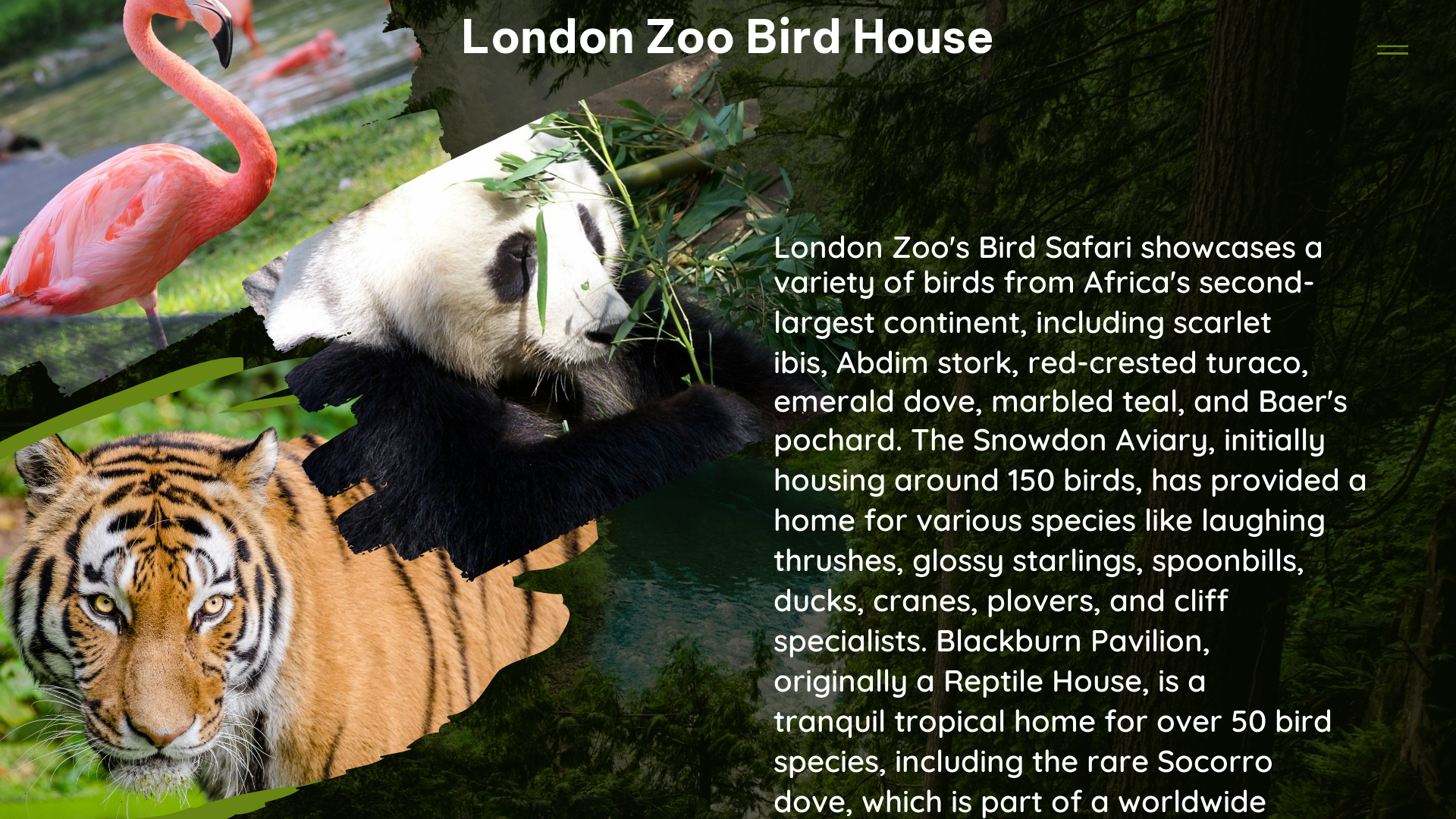The London Zoo Bird House, also known as the Snowdon Aviary, is a historic and iconic structure that has undergone a remarkable transformation over the years. Initially built in 1965, it was Britain’s first walk-through aviary and a pioneering project in London architectural design. Today, the aviary has been transformed into Monkey Valley, a new home for ZSL’s eastern black-and-white colobus monkeys.
The Snowdon Aviary: A Pioneering Architectural Masterpiece
The Snowdon Aviary was designed by Antony Armstrong-Jones, the late 1st Earl of Snowdon, in collaboration with architect Cedric Price and structural engineer Frank Newby. The design was inspired by the flight patterns of birds, featuring a soaring steel and aluminium structure covered with lightweight aluminium mesh. The aviary stood at 24m high and was the first tension building in the UK designed to be permanent, showcasing innovative use of aluminium and computer modelling for engineering calculations.
Over the years, the Snowdon Aviary provided a home to a wide variety of bird species, including laughing thrushes, glossy starlings, water birds, ground-dwelling cranes, plovers, and cliff specialists such as kittiwakes and alpine choughs.
Monkey Valley: The Transformation of the Snowdon Aviary

In 2022, the Snowdon Aviary underwent a remarkable transformation, becoming Monkey Valley, a new home for ZSL’s eastern black-and-white colobus monkeys. This redevelopment was made possible by a £4 million grant from the National Lottery Heritage Fund and a £1 million donation from The Ambika Paul Foundation.
Visitors can now take a tree-top walk while monkeys leap from branch to branch of their landscaped home in Monkey Valley. The transformation has breathed new life into this iconic structure, providing a unique and immersive experience for visitors to observe the monkeys in their natural habitat.
The Blackburn Pavilion: A Modern Walk-Through Aviary
For those still interested in bird life, London Zoo’s modern walk-through aviary at the Blackburn Pavilion offers the opportunity to discover some of the current bird collections. The Blackburn Pavilion, originally built in 1883 as a Reptile House, has been restored to provide a tranquil tropical home for more than 50 different species of birds.
Visiting the London Zoo Bird House and Monkey Valley
The London Zoo Bird House, now transformed into Monkey Valley, is a must-visit destination for zoo enthusiasts and nature lovers alike. Visitors can explore the tree-top walkway and observe the eastern black-and-white colobus monkeys in their landscaped habitat. For those interested in bird life, the Blackburn Pavilion provides a complementary experience, showcasing a diverse collection of bird species in a tropical setting.
Whether you’re fascinated by the architectural history of the Snowdon Aviary or eager to witness the monkeys in their new home, the London Zoo Bird House and Monkey Valley offer a unique and captivating experience for all visitors.
Key Details
| Detail | Information |
|---|---|
| Name | Snowdon Aviary, now transformed into Monkey Valley |
| Location | London Zoo |
| Original Opening Date | 1965 |
| Transformation into Monkey Valley | Summer 2022 |
| Cost of Transformation | £4 million grant from the National Lottery Heritage Fund and a £1 million donation from The Ambika Paul Foundation |
| Type of Place | Former aviary, now a primate habitat |
| Status | Open |
| Species | Eastern black-and-white colobus monkeys |
| Experience | Tree-top walk, observing monkeys in their landscaped home |
| Nearby Attraction | Blackburn Pavilion, a tropical walk-through aviary for bird enthusiasts |
References:
– History of the Snowdon Aviary
– Transformation into Monkey Valley
– Blackburn Pavilion
